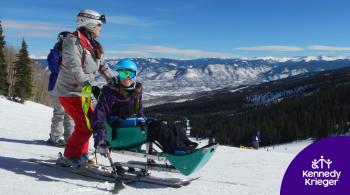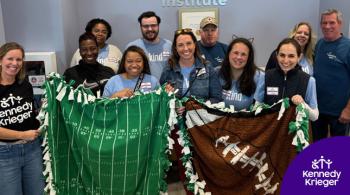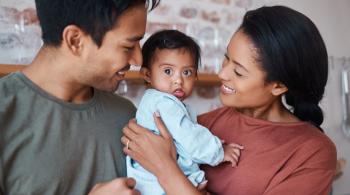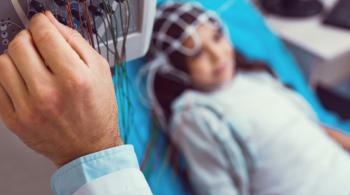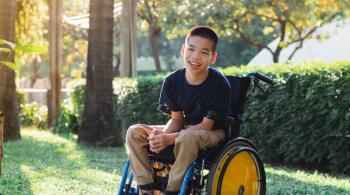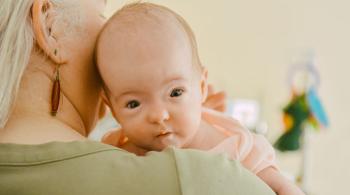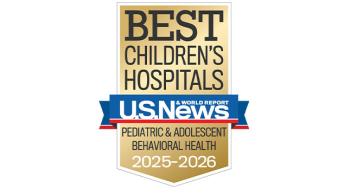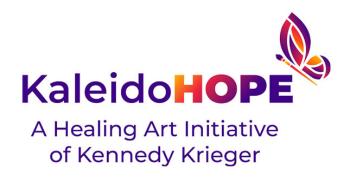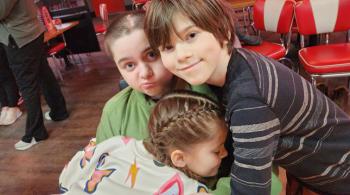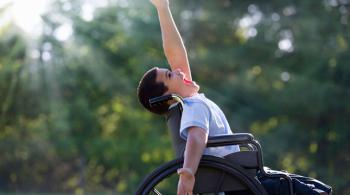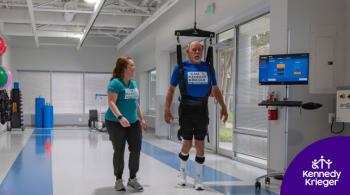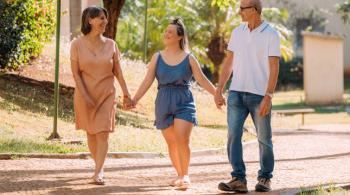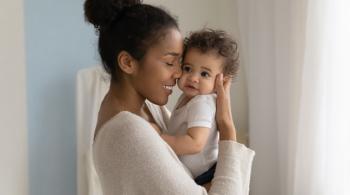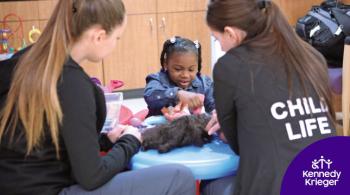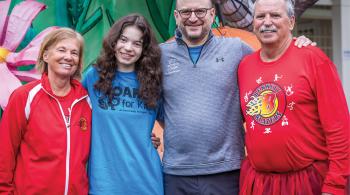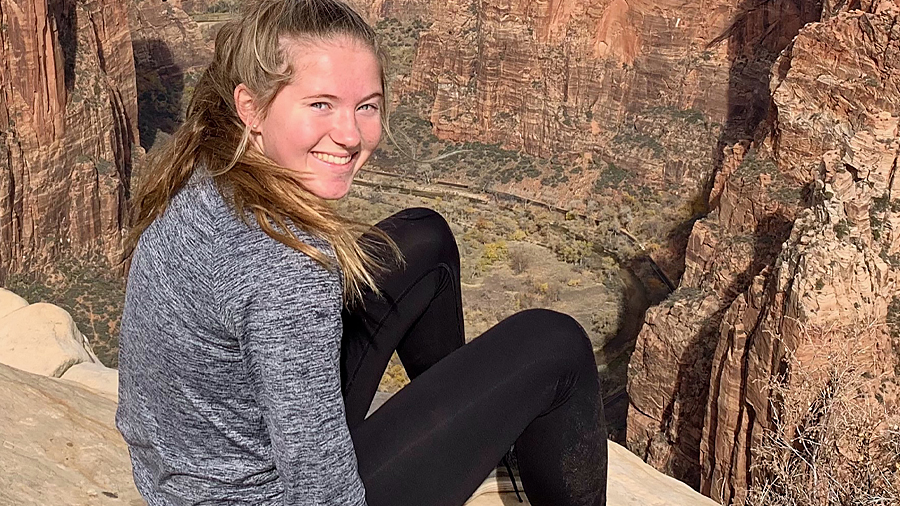
By Laura Thornton
Hannah, 20, is a nursing student and collegiate soccer player. She’s smart, athletic, outgoing and always ready to help a friend or teammate. And until last year, she always enjoyed good health.
Last fall, Hannah and her parents and brother all came down with COVID-19. While her parents and brother recovered fully, Hannah developed long COVID-19.
“I couldn’t do much,” Hannah says. “I couldn’t go to school. I couldn’t go out and socialize with friends. My parents had to take care of me.”
Long COVID-19 occasionally develops in people who have had COVID-19, and healthcare professionals are still learning about the condition. Its symptoms, which can linger for months, vary from person to person and include fatigue, dizziness, headaches and brain fog—all of which Hannah experienced. She also began having epileptic seizures.
“I felt like I was a zombie walking around,” she says. “I was there physically, but nothing was going on inside. Everything was dull, and I couldn’t really function. It was very debilitating.”
“Watching your child go through this isn’t easy,” says Alyssa, Hannah’s mother. “I can’t imagine waking up every day and not feeling well for as long as Hannah did,” adds Brian, her father. Alyssa and Brian researched rehabilitation programs that might help their daughter. Someone mentioned Kennedy Krieger Institute, about an hour from their home in Pennsylvania. Alyssa gave the Institute a call.
The Right Track
By the time Hannah had her first appointment with the Institute’s Pediatric Post-COVID-19 Rehabilitation Clinic, she’d already worked for several months with physical and occupational therapists near where she lives, but she wasn’t improving. She didn’t have her old self back—not even close.
But at that first appointment, which lasted around five hours, Hannah and her parents began to feel just a little bit hopeful. A full complement of clinicians—including a pediatric rehabilitation doctor, a pediatric neurologist, a behavioral psychologist, a nurse and a social worker—met with Hannah and her parents to learn as much as they could about Hannah and her illness. “I felt relief that we now had a whole team of doctors looking at her holistically,” Alyssa says. “I felt like we were finally going down the right track.”
When they suggested that Hannah might benefit from Kennedy Krieger’s Specialized Transition Program (STP), a neurorehabilitation day hospital, “I thought that was just what I needed,” Hannah says.
“They were all working together and collaborating. I liked it from the first day.” – Hannah
Hannah spent four weeks at the STP this past summer, doing intensive physical and occupational therapies for several hours a day, five days a week, and receiving several sessions of psychological services each week. Hannah appreciated her care team’s interdisciplinary approach. “They were all working together and collaborating,” she says. “I liked it from the first day.”
Within a week, Hannah was starting to notice changes in herself—in her rallying energy levels and ability to think more clearly. Her parents noticed, too. “She told us she felt like she was getting her old self back again,” Alyssa says.
Hannah was one of the STP’s first patients with long COVID-19. The STP offers neurorehabilitation in a day hospital setting for pediatric patients with a variety of conditions, from traumatic brain injury to chronic pain. Developing a protocol to treat patients with long COVID-19 was not much different from developing a protocol for any other patient—the diagnosis was new, but the symptoms were all ones the program had treated before.
“Patients with long COVID-19 tend to have milder symptoms in all areas, but because they have symptoms in so many areas, they tend to be more anxious than other patients,” says Dr. Joan Carney, assistant vice president of clinical programs and the STP’s director. “They’re not as coordinated as they used to be, and they’re tired in school and can’t think clearly, and that tends to make them a little more depressed. We help them sort out the ‘Why me?’ and equip them with strategies to help them cope and feel better.”
Interdisciplinary Care
On Hannah’s first day at the STP, a vestibular screening revealed she was experiencing visual impairment and intolerance to movement. Physical therapist Dr. Katlyn Billups led Hannah through a vestibular training program: While keeping her eyes fixed on a single object, Hannah would slowly move her head back and forth. Once she could do that for 10 seconds, she increased the time—until she could keep it up for a whole minute. By then, she was feeling much less dizzy and nauseous.
Hannah also spent a lot of time on the treadmill—first walking, then running, then running while turning her head from side to side, to simulate running down a soccer field during a game. “She was really motivated to get better, and so receptive to everything,” Dr. Billups says. “She didn’t get discouraged, and really pushed hard to get better.”
Twice a week, Hannah met with psychologist Dr. Effie Mougianis, who helped her mentally process what she was experiencing. “Before the pandemic, she was a very healthy, very talented student-athlete—that was her identity,” Dr. Mougianis says. “COVID-19 stripped her of that—at least temporarily—leaving uncertainty in its place. I gave Hannah a space to sort through all the things she was dealing with. And she accepted the invitation, talking with me about what she’d learned about her diagnosis and symptoms, which is all part of navigating a complex medical condition.”
Because she’d recently been diagnosed with epilepsy, Hannah also met with neuropsychologist Dr. Danielle Ploetz. “I couldn’t say for certain if her epilepsy was related to COVID-19, but I could say what difficulties she was having because of it,” says Dr. Ploetz, whose assessments helped the rest of Hannah’s care team better understand Hannah’s ability to focus and concentrate, both of which improved greatly while she was at the STP.
Hannah also developed postural orthostatic tachycardia syndrome (POTS) after getting COVID-19. POTS sometimes develops in patients recovering from a viral infection, including COVID-19, explains Dr. Christina Kokorelis, director of Kennedy Krieger’s POTS clinic. Hannah’s POTS symptoms included lightheadedness and headaches. Dr. Kokorelis prescribed new medication for Hannah as well as hydration and physical activity—which, of course, Hannah was already doing at the STP. “With the new medication and other interventions, Hannah’s symptoms improved, and she was able to get the most out of STP,” Dr. Kokorelis says.
To help Hannah return to college, Alecsandra Adler, the STP’s educational specialist, coached her in working with her university’s disability office to request any accommodations—such as extra time on exams or listening to digital books—she might need. Adler offered to advocate on Hannah’s behalf, and remains available to help Hannah at any time, “but she politely declined,” Adler says. Hannah was ready to take charge of her life again.
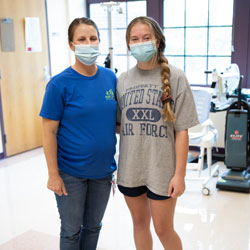
and Hannah
‘Eventually, Things Will Get Better’
Shortly after Hannah returned to college this past August, she relapsed, passing out and having a seizure. After recovering consciousness, she called Dr. Billups and Dr. Mougianis. “They walked me through ways to manage the relapse,” including doing about an hour of physical therapy exercises a day.
Hannah isn’t back to taking a full load of classes, but she’s working up to it. And she’s back on the soccer team—not yet playing in games, but practicing with the team. She loves being at school again, surrounded by her teammates, who keep an eye out for her in case her symptoms flare up again.
“Hannah’s always smiling,” Dr. Mougianis says. “She has a great sense of humor, and I think her laughter and smiling are the things that have allowed her to be as resilient as she has been in this challenging time.”
Hannah’s advice to others with long COVID-19 is to stay positive and not give up. “It’s hard at first to see the big picture and the other side of things, but just keep pushing on, and you’ll make it to the other side,” she says. “Eventually, things will get better.”

